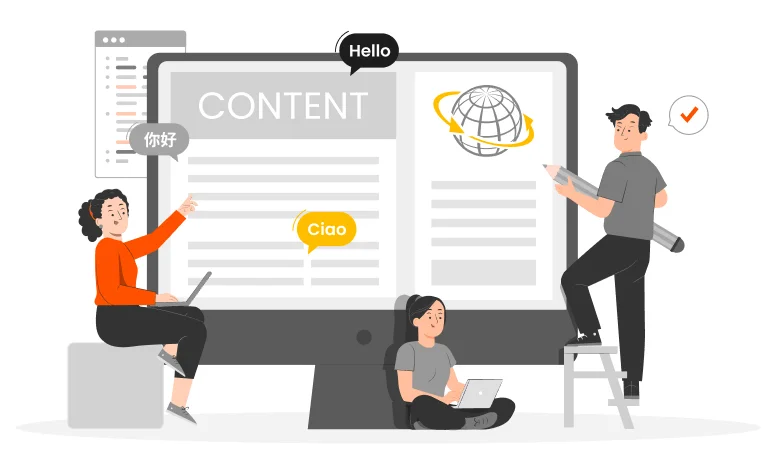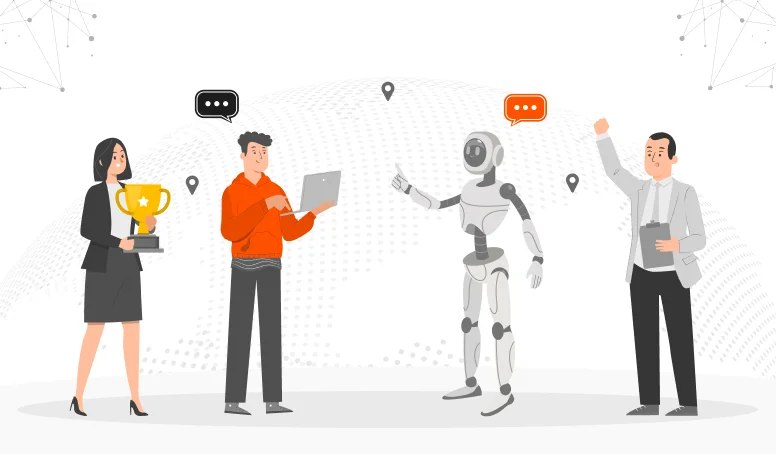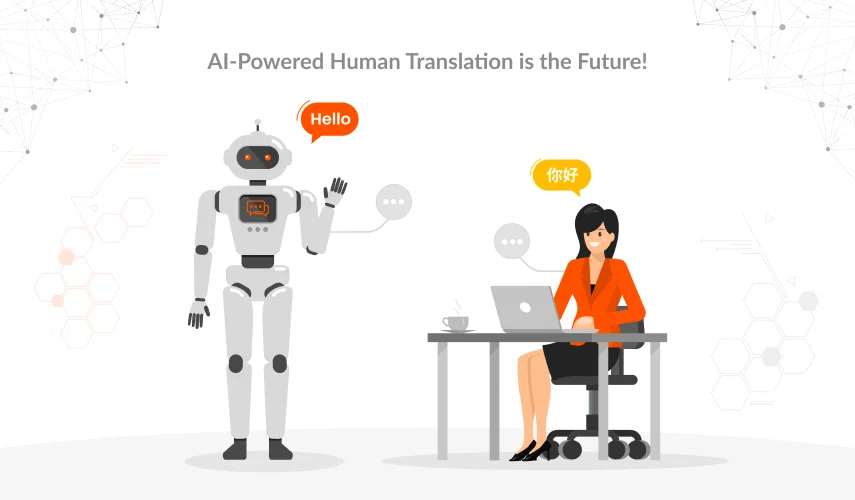Most people have their very first introduction to artificial intelligence from sci-fiction movies. And this is the main reason why there are a lot of misconceptions and confusion about AI. Just because some Hollywood movies have over-exaggerated the whole concept of machine intelligence, people get intimidated by AI and consider it as something against humanity.
Not just that, there is a big concern about job security because AI robots seem to take over the future workforce. People talk about 87 million jobs that AI would replace, but no one really mentions the 97 million new jobs that AI technology is going to create. It seems like a win-win situation for the world economy and people.
This article is going to give you a reality check on artificial intelligence, its significance, and its overall impact on the world.
What is Artificial Intelligence?
Artificial intelligence is an advanced technology that enables computers and other machines to learn fast, think rationally, and make wise decisions. AI-powered machines can perform many tasks better than humans, and they are constantly learning and improving. They use advanced algorithms and process a large amount of data to perform complex tasks in relatively less time and more efficiently. AI robots are smart enough to mimic human behavior and perform tasks that would require human intelligence. Visual perception, decision-making, machine translation, and speech recognition are some common traits of AI systems. AI machines, just like humans, also take some time to get wiser, with time they learn how to do reasoning and perform their tasks more efficiently. Scientists have designed AI technologies by studying the human brain, its working, and how it makes decisions. Research on human cognition makes developing highly intelligent systems and programs possible.
Artificial Intelligence Evolution
Artificial intelligence is emerging as a useful and formidable technology over the years. We have developed smart AI systems and machines that can think and perform complicated tasks. IT firms around the world have adopted AI and incorporated this amazing technology into software and tech applications. Implying the human evolution theory of “survival of the fittest”, the AI algorithms that have improved over generations can work independently without any human involvement.
A Brief History
Artificial intelligence was first introduced as a potential idea in the 1950s. Many scientists and intellectuals have talked about AI again and again. Early computers were not powerful enough to support the idea and take AI development further. For a very long time, computers can fundamentally execute instructions but can’t really store any information. The limited capabilities of computers also make financing very complicated and difficult. By 1974, computing technology gained momentum and started becoming famous. It was the time when the computer became faster, cheaper, and able to store data. The evolution of computers gives scientists a foundation to practice AI technology and perform experiments on machine learning.
Current Developments
AI has literally taken over a lot of industries, including businesses and government sectors, and it has now become impossible to imagine our lives without it. In the business sector, AI has increased productivity and performance to a great extent by automating workflows. With the help of AI and big data, now companies can forecast upcoming market trends and make informed decisions. AI systems are powerful enough to manage and organize big data which makes it easier for AI machines to compile large volumes of information and recognize recurring patterns. This makes it possible for computers to comprehend major problems and employ suitable solutions with logical reasoning.
Security systems also use AI technology, such as face and speech recognition. These systems are smart enough to detect unauthorized faces and unusual patterns to prevent fraud and spam. Moreover, the use of AI is also prominent in weather forecasting, transportation, and health diagnosis.
The Future of AI
We are heading towards a new industrial revolution that is going to be more impactful than the previous ones. From metal and steam to electricity and IT, human development has been greatly influenced by the Industrial Revolution. The progress of AI is going to make improvements in business, healthcare, manufacturing, transportation, media, advertisement, and IT sectors. AI is not just creating new jobs but also leads to better lifestyles and income levels.
Importance of Artificial Intelligence
Whether it is businesses that can now make more insightful decisions, or governments that are able to enhance national security, AI is the major factor behind all of these progressive developments. We all know that; AI can perform complex tasks quicker and better than humans because of their powerful algorithms. The ability of AI to learn and think has made it high in demand by advertising firms, IT sectors, businesses, and a lot of other industries. All successful companies, including Google, Facebook, and IBM, are adopting an AI-first approach to make their business compatible with future developments and innovations.
In the future, AI technology will not just replace the current jobs but also help the workforce to enhance their overall performance. This technology streamlines the workflows enabling the employees to accomplish more tasks in less time – that too with maximum efficiency.
How Does Artificial Intelligence Work?
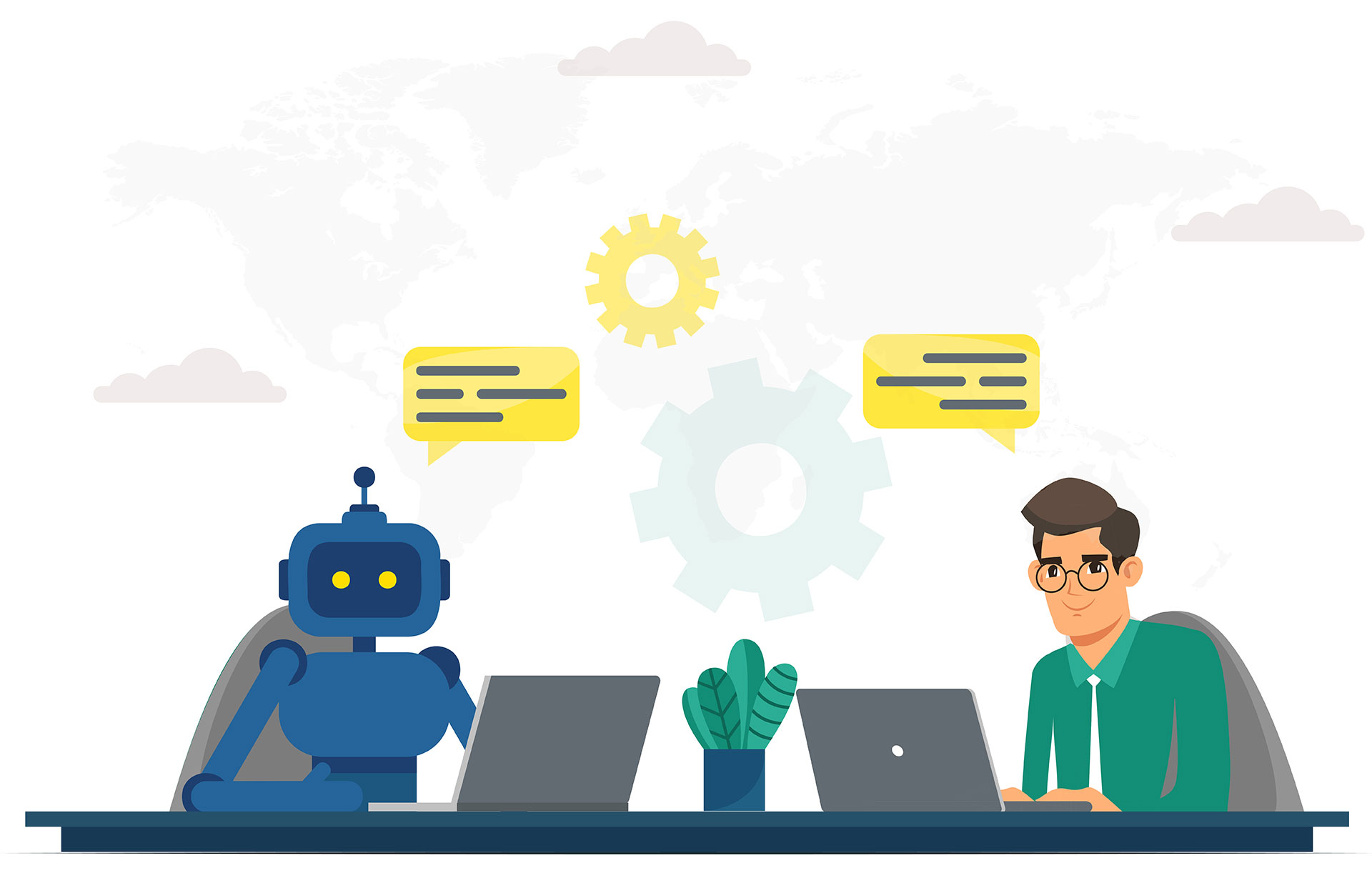
The working of AI systems is a bit complex that sometimes even the developers of AI algorithms can’t tell how these systems actually learn and make decisions. With time, as the machine learns new patterns and behaviors, its algorithm becomes more and more difficult to understand. Here are a few basic AI functions that machines perform for the execution of a specific task.
1. Logical Reasoning & Problem Solving
In the initial stages of AI research, AI machines were highly inspired by the human brain’s process of problem-solving and reasoning. However, the limited resources and memory of computers make this research approach more challenging. Such issues lead to the implication of immediate judgment instead of cautious reasoning. AI machines can use the combination of the following to achieve immediate judgment attributes.
a) Sensorimotor Skills
Robots use this judgment method to react immediately in reaction to human action or an environmental setup. These machines sense their surroundings’ actions and act accordingly.
b) Statistical Methods
These approaches are used to solve complex mathematical problems. For example, statistical approaches are adopted to solve a puzzle and make the best move in a chess game.
c) Embodied Agents
These are the independent objects that can interact with the environment in real time. Such technologies are embedded inside the robot’s body.
d) Neural Systems
Such an AI system follows the processes of the human brain for performing a specific task. Computing, machine learning, and pattern recognition are some major examples of neural networks.
2. Machine Learning
Machine learning is the most dominating branch of artificial intelligence that deals with algorithms and data. Using these advanced algorithms along with a large amount of data enables the AI systems to do critical thinking and deep learning. Machine learning also improves the decision-making of IT applications and businesses. It is also becoming a major part of data sciences because of its ability to make predictions. Depending on your input data, the algorithms would perform some actions to recognize a pattern in data and draw a conclusion accordingly. Machine learning is classified into three sections.
a) Supervised Machine Learning
In supervised machine learning method, the algorithms are used to evaluate and cluster the labeled data groups and draw conclusions accordingly. When the data is provided, the weight of the data is adjusted to the model until the validation process is completed. With the help of supervised machine learning, we can solve the actual problem occurring in real work; for instance, it can help in separating the spam folders from your emails.
b) Unsupervised Machine Learning
In unsupervised machine learning method, the algorithms are used for evaluating and clustering the unlabeled data. There is no need for any human intervention; the algorithms can find the patterns in data and categorize them. In this process of machine learning, machines analyze the data; moreover, they evaluate the similarities and differences in datasets.
c) Semi-Supervised Machine Learning
It is a middle ground between supervised and unsupervised machine learning. It uses a small number of unlabeled datasets for the classification guide and extracts a large number of labeled datasets. If you don’t have a sufficient number of labeled datasets for the algorithm training, you can use the semi-supervised dataset instead.
3. Natural Language Processing
It is a field of artificial intelligence that deals with the recognition of spoken and written language. This technology is also used in many speech recognition applications that have to respond to human speech or written queries, such as search engines. The information and data stored online or in databases are mostly human languages. With the help of natural language processing technology, the machine can comprehend human languages and respond more sanely to their queries. The natural language process is mainly used for text classification, text extraction, machine translation, and natural language generation.
Some common examples of real-world applications that use natural language processes are automated translations, customer service automation, word processing applications, customer feedback analysis, etc. Natural language processing improves the accuracy of your documents, creates automated summaries for large volumes of text, organizes chatbots for customer service, and performs sentiment analysis.
4. Machine Perception
In computer systems and applications, machine perception enables responses based on sense. It is very much similar to human perception. Just like humans, machines can also touch, hear and see. Such functionalities in machines enable them to act like humans and mimic their behavior in certain conditions. The computer can analyze images and videos which is also known as machine vision. Facial recognition is a major example here. Similarly, speech and sound recognition are an example of machine hearing. Such technologies are majorly used in search engines and security systems. Machine touch gets information from tactile interaction and surroundings. In AI robotics, machine vision, hearing, and touch functionalities are becoming more common; however, machine smell is still in its early stages.
How is Artificial Intelligence Changing the World?
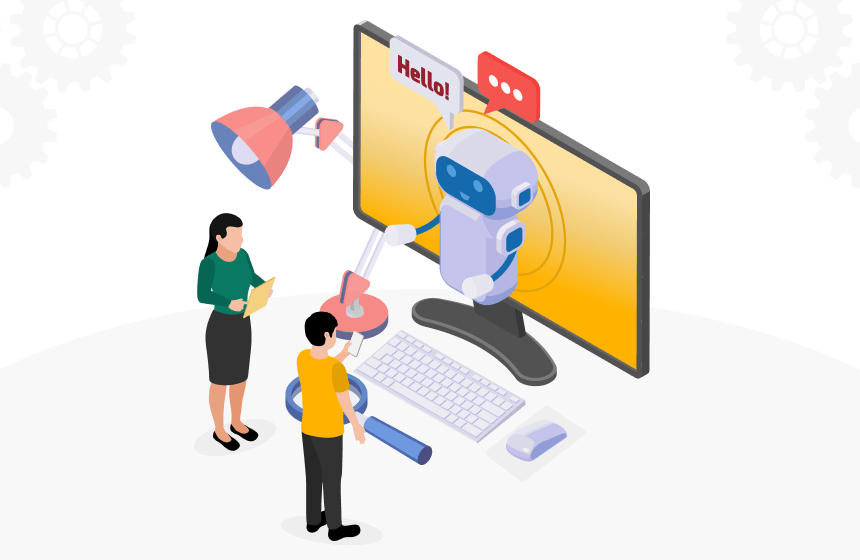
AI is making our everyday lives easier and hassle-free. From social media algorithms to national security systems, the impact of AI is everywhere. Let’s have a look into how the use of AI is expanding and taking over different industries globally.
1. Automotive
AI-powered automatic cars are widely used that have made driving super easy. In the future, driving is going to be even more convenient with self-driving vehicles. The highly populous urban communities are facing heavy traffic issues that lead to more road accidents. Self-driving cars with advanced AI systems can reduce the likelihood of road accidents. Tesla Autopilot is a great example of an AI self-driving car. The AI sensors inside self-driving vehicles are so powerful and have the ability to see, hear, and think, most of the time even better than human drivers.
2. Healthcare
AI technology has revolutionized the healthcare sector. Advanced AI medical devices are not just capable of conducting accurate diagnoses, but they can even think of different scenarios and learn from experiences. These devices can mimic human cognition and draw conclusions with great precision. Using patient data, these medical devices can make accurate disease diagnoses and design more suitable treatment plans.
The demand for healthcare services is continuously increasing around the world, and to meet that need, we have to come up with advanced AI systems that would support healthcare providers and hospitals to make timely diagnoses based on the patient’s symptoms and history. Your doctor might not be able to update their medical expertise with upcoming developments. AI devices keep themselves updated with all medical research and developments that allow them to diagnose and treat various health conditions more efficiently.
3. Security Systems
Al-powered security tools can identify and predict security threats without any human involvement. Whenever they detect any malicious activity, they immediately send an alert to minimize the effect of the cyber-attack. Most security systems incorporate facial recognition and speech detection tools that ensure authorized access to a setting or system. Moreover, they also help you detect any malicious code, firewall, or virus in your devices.
4. Machine Translations
AI has also taken over the translation industry with advanced machine translation tools to generate automated translations. These systems are powerful enough to generate high-quality content in multiple languages. Language service providers and global businesses use these systems to fulfill their translation needs and connect with global audiences. Machine translation systems use translation memory and quality assurance systems that not only help you generate quick translations but also keep the brand voice consistent across all regions. Open-source translation systems are not as effective as paid systems, so it is important to choose a reliable AI machine translation tool.
5. Finance
AI technology has made financial management so easy and convenient as AI systems evaluate a large volume of data and make accurate predictions. It helps you access all potential risks and make informed financial investments. With the help of machine learning and deep-thinking technology, you can reduce your overall financial risks and create lucrative financial decisions. Moreover, AI tools can also detect financial fraud and take measures to prevent financial crime, such as money laundering.
Takeaways!
Everything is going quite well with artificial intelligence. There are some concerns regarding the survival of humanity if AI takes over. Many, including Stephen Hawking, believed that the advancement of AI would lead to human extinction. Well, nuclear weapons and climate change are still the better candidates to wipe away humanity. Thinking rationally, AI doesn’t seem hostile to humans at all; at least the current version of it. As we know AI, it has helped humanity by making the lives of people easier and creating hassle-free jobs so far. With AI, we should all hope for a better and safer future.

